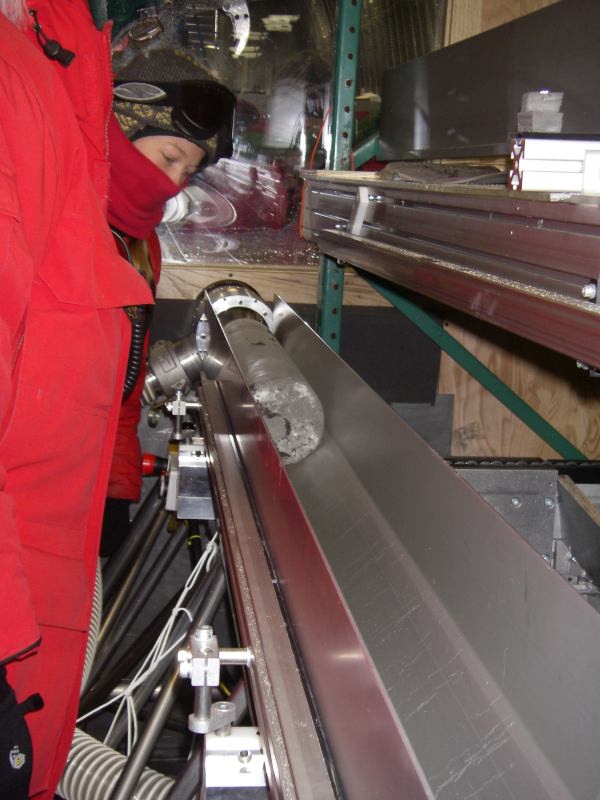We have now been coring for about two and half weeks and we are finally getting the hang of drilling, documenting, and packing the ice cores. We work 24 hours a day in three shifts. During each shift three drillers and three core handlers all work at the same time. The arch itself is split into the two sections. The warmer (-10°C) of the two sides is where the drillers work. The entire drilling set-up is contained on this side of the arch. The cold side of the arch (-26.9 °C) is where I work and it is typically about 10-15°C colder on the core handling side than the drilling side. The cores are pushed through the wall from the driller's side to the core handling side so the ice is never exposed to the warmer temperatures. However, as the days go on here in Antarctica, cold is becoming a very relative term!
Here is a short blurb about how the DISC (Deep Ice Sheet Coring) drill works put together by the lead driller Kristina Dahnert and Maria Banks, a core handler.
The drill sits on a hydraulically driven tower. The tower rotates the drill into a fully vertical position and a cable winch is used to lower the drill into the borehole (more than 160mm in diameter). Once the drill reaches the ice, cutters in the cutter head of the drill begin to cut a cylindrical core out of the ice (about 122mm in diameter). "Shoes" are in the cutter head too and control the rate of penetration of the drill into the ice. Also in the cutter head are what are called "core dogs." These are used to break and retrieve the ice core once the cutters are finished. The drill is then pulled back up through the borehole and the tower and drill are tilted to a horizontal position. The core barrel, which holds the ice core, is separated from the rest of the drill, and is carried by a gantry crane to a window that separates the drill structure from the core processing area (to maintain the cold temperatures needed in the core processing area). The core barrel is attached to a hole in the window and the ice core is pushed out of the barrel using a rounded stick with a cushioned puck at the end (almost like a chimney sweeper). The core passes through the hole in the window, and into the core processing area where the science technicians are waiting to receive, measure, and do a preliminary analysis of the core.
Thanks to Maria and Kristina for this nice summary!



Comments